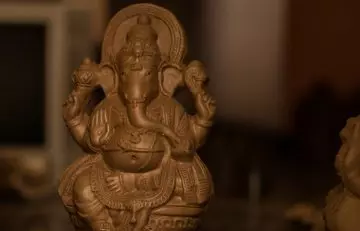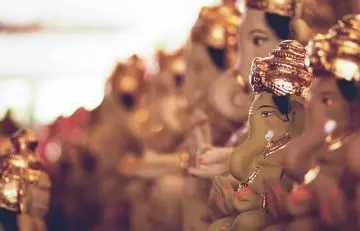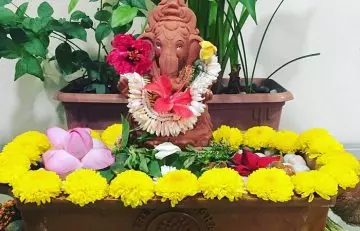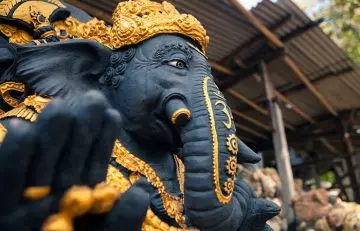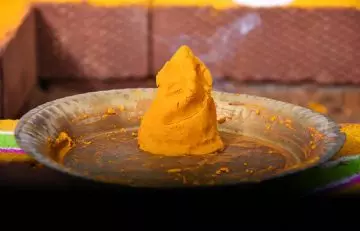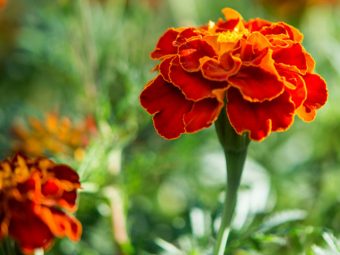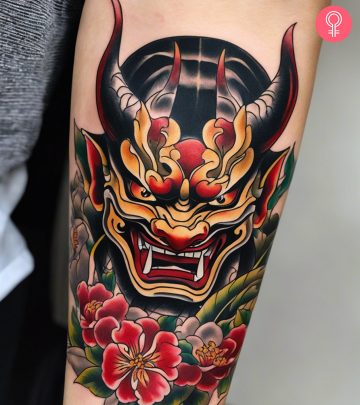8 Ways To Go Eco-Friendly This Ganesh Chaturthi

When looking at the list of festivals celebrated in India, Ganesh Chaturthi is one of those that make it to the top of the list. This is one festival that brings together people from different walks of life as they celebrate with fun and frolic. The thought of Ganesh Chaturthi rekindles memories of colors, music, fireworks, and of course, a large idol of Lord Ganesh that is worshipped and celebrated for 10 days. On the 11th day, the idol will be immersed in the nearest water body (sometimes a bucket of water).
Sounds like a lot of fun doesn’t it?
Now, let us look at the day after the immersion. It is not a new sight to see decorations made out of plastic and thermocol floating around in the lake or washed to the banks of the sea or river. And, at the bottom of these water bodies, there lies a massive amalgamation of harmful materials, such as Plaster-of-Paris, and metal insertions. These materials have the potential to turn toxic over time and affect aquatic life. And, with the use of inorganic paints, the water gets polluted beyond usability.
Against this backdrop, several state governments have banned the usage of Plaster-of-Paris idols and use clay or mud ones instead.
Technically, the use of clay and mud to make idols is not a new practice. Before the introduction and easy availability of Plaster-of-Paris, artisans used organic material for making idols. However, pollution does not end at the aquatic level. Plastic cutlery at food stalls, smoke from fireworks, and metallic paint on the idols are far more hazardous than we can fathom.
So, with the big festival day nearing, here are 8 ways to celebrate Ganesh Chaturthi this year, without feeling guilty about killing the environment. Read on to know more.
Let’s start with a focus on how to replace the Plaster-of-Paris Ganesh.
1. A Mud Idol Completes The Material Cycle
An idol made out of just plain mud. These cute Ganesh idols come in a variety of designs while maintaining the color of mud. This not only adds to the environmental value, but also the aesthetic value. Once the celebration is over, and the elephant-head deity is immersed in water, it will not clump up and turn toxic. Rather, it will go back to its original state and become one with mother earth again. Word of caution: Avoid buying the ones with thermocol or plastic décor on it.
2. Cow Dung Ganesh To Help Plants
Now, it is usually a tradition in several urban families to immerse the Ganesh idol into a bucket of water and pour the mixture into a plant pot or at the foot of a tree. Now, if you are going for a Ganesh made from cow dung, one of the most nutrient-rich manures known, imagine the number of plants that can benefit from that. Besides, think of the number of Ganesh idols that are bought and immersed each year. If all that could be reused manure, it could be a perfect way to give back to the nature.
3. Good Old Clay Any Day
Idols made out of clay is probably one of the most traditional ways to make idols. That being said, after the rituals are completed, immerse the Ganesh idol into a bucket of water and pour the mixture to plants, or immerse it into the river or lake. Going back to our high school science class, clay helps increase water retention for the plants. See? No harm done.
4. Let your Ganesh Give Life
One of the most recent trends in Ganesh idols is that they come with a seed in them. After the 10 days of celebration, the Ganesh can be planted in the garden or a clay pot. And, as the blessings of God remain in the house, the seed, which can be any plant of your choice, will germinate on its own.
Now, outside just the idea of a Ganesh idol, several other practices are causing harm to nature in the name of grandeur. In order to avoid these problems, a few simple changes can go a long way.
5. Say No To Fireworks
The amount of smoke that is emitted from bursting crackers is not bad just for the air. Several people tend to get injured in the process, and the worst of all, it scares animals. Dogs dread the festive season, simply because of how much noise and nuisance we create in the name of celebration. If we can’t spread the joy with all of God’s creations, what is the point of celebrating God in the first place?
6. Bye Bye Plastic
During Ganesh Chaturthi celebrations, food stalls see a surge in business. However, the use of plastic cutlery is again a huge problem, in terms of disposal and recycling. Against these odds, opt for biodegradable cutlery and make sure they are disposed properly.
7. Bid Farewell To The Luster
Did you know that the metallic paint used for decorating the Ganesh and pandals has actual metal components in them? Let us reiterate something that we probably already know. These metal paints are bad for the environment and when they mix in water or soil, they can turn food and water into poison.
8. Say Hello To Organic Colors And Materials
There are several materials that can provide natural color and texture to the décor. While you can make Ganesh idol with kitchen items like wheat flour and turmeric, you can color them with turmeric water or beetroot concentrate. Give it a shot. Who knows? You might actually like it.
Also, it would fun to make your own Ganesh with mud or clay. Pull in your friends, cousins, and relatives, and this could be a wonderful time to bond. Don’t believe us? A number of celebrities are making their own Ganesh idols this year.
Karan Wahi is giving it his best to bring home a handmade Ganesh.
Rithvik Dhanjani is known to make his own Ganesh idol for the festival each year. Check out his Ganesh this year.
Raqesh Bapat believes that beauty is in the details.
So, what do you feel about these tips to make this festival season eco-friendly? Share your thoughts in the comments section below. And, make sure your heart holds no guilt as you welcome home your little Ganesh, and pamper him for another ten full days.


